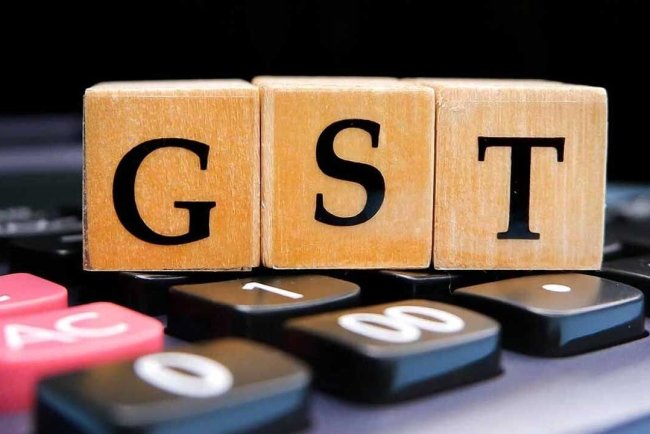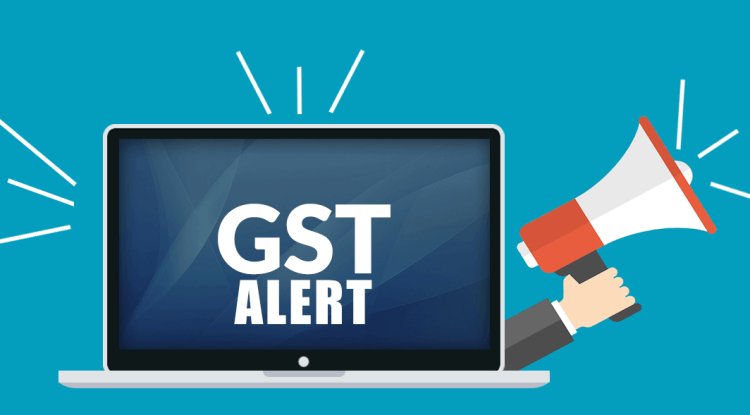Standard Deduction for AY 2025–26
Standard Deduction: ₹50,000 (Old/New Regime); ₹75,000 (New, salary > ₹15.5 lakh) for salaried/pensioners, not self-employed. Home Office: Freelancers claim actual expenses (rent, utilities) under Sections 30–37. Travel: Gig workers claim actual costs (fuel, repairs) with logs. Presumptive Taxation: ₹7,500/vehicle/month (44AE) or 50% receipts (44ADA). Charitable/Medical: 80G (donations), 80DDB (up to ₹1 lakh). ReadyAccountant.com offers tax support and training. File by July 31, 2025; use ITR-1/ITR-4. Monitor Budget 2025.

India’s income tax system can feel like a maze, but understanding the standard deduction and other tax benefits for Assessment Year (AY) 2025–26 (Financial Year 2024–25) can significantly reduce your tax burden. This 1000-word blog post provides a detailed guide for salaried employees, pensioners, freelancers, and gig workers, covering the standard deduction, home office expenses, travel deductions, presumptive taxation, and more. Let’s dive into optimizing your tax savings!
Understanding the Standard Deduction
The standard deduction is a fixed amount subtracted from the taxable income of salaried individuals and pensioners, streamlining tax filing by eliminating the need to submit proofs for expenses like transport or medical costs. Introduced in Budget 2018, it replaced earlier allowances, offering simplicity and relief.
Dedication Limits for AY 2025–26
-
Old Tax Regime: ₹50,000 for all eligible taxpayers.
-
New Tax Regime:
-
₹50,000 for all eligible taxpayers.
-
Enhanced ₹75,000 for those with gross salary exceeding ₹15.5 lakh (introduced in Budget 2023).
-
-
No changes in limits from FY 2023–24 to FY 2024–25 (AY 2025–26).
Why It Matters: The standard deduction reduces taxable income without paperwork, and the ₹75,000 limit in the New Tax Regime incentivizes high earners to opt for it, especially since it forgoes other exemptions like HRA or Section 80C.
Who Can Claim the Standard Deduction?
The standard deduction is available to:
-
Salaried Employees: Government and private sector workers, including those in remote or hybrid roles.
-
Pensioners: Individuals receiving pensions from former employers or family pensioners (e.g., spouse or dependents after an employee’s demise).
-
Form 16 Holders: Employers automatically apply the deduction, reflected in Form 16.
Who’s Excluded?:
-
Self-employed individuals, freelancers, consultants, or business owners earning under “Profits and Gains of Business or Profession.” These taxpayers can explore other deductions, such as business expenses or presumptive taxation (discussed later).
Pro Tip: Verify your Form 16 to ensure the standard deduction is correctly applied, especially if you switch jobs mid-year.
Home Office Deductions for Freelancers and Self-Employed
Unlike the U.S., where the IRS offers a simplified “home office deduction,” India doesn’t have a standardized equivalent. However, freelancers and self-employed professionals can claim actual business expenses for home office use under Sections 30–37 of the Income Tax Act, 1961.
Eligible Home Office Expenses
-
Rent: Proportionate cost for the office area (e.g., 20% of rent if 20% of your home is used for work).
-
Utilities: Electricity and internet bills (business-use portion).
-
Depreciation: On office furniture (e.g., desks, chairs) and equipment (e.g., laptops, printers).
-
Repairs and Maintenance: Costs for maintaining the office space.
-
Other Costs: Stationery, software subscriptions, or professional memberships.
Documentation Requirements
-
Maintain rent agreements, utility bills, and purchase invoices.
-
Calculate expenses based on business use (e.g., 20% of electricity if 20% of space is an office).
-
Keep records audit-ready, as tax authorities may scrutinize claims.
Example: A freelancer pays ₹25,000/month rent for a 1,200 sq. ft. apartment, using 240 sq. ft. for work. They can claim 20% of rent (₹60,000/year), plus 20% of ₹2,000/month electricity (₹4,800/year) and depreciation on a ₹50,000 laptop (40% = ₹20,000/year).
Tip: Use a dedicated workspace to strengthen your claim and avoid disputes during audits.
Travel and Mileage Deductions for Gig Workers
India doesn’t offer a fixed “standard mileage rate” like the U.S. IRS ($0.67/mile in 2025). Instead, freelancers, gig workers, and professionals can claim actual travel expenses related to business under Sections 30–38.
Who Can Claim?
-
Freelancers/Consultants: Traveling for client meetings or projects.
-
Gig Workers: Delivery agents (e.g., Swiggy, Zomato) or Uber/Ola drivers.
-
Businesses: Sales professionals or logistics operations.
Eligible Expenses
-
Fuel costs (petrol, diesel, CNG).
-
Vehicle repairs and maintenance.
-
Insurance premiums and depreciation (e.g., 15% per year for cars).
-
Tolls, parking fees, or driver salaries (if applicable).
Documentation
-
Maintain a travel log with date, purpose, kilometers traveled, and destination.
-
Keep fuel receipts, repair bills, and insurance documents.
-
Apportion expenses by business use (e.g., 70% business, 30% personal).
Example: An Uber driver travels 12,000 km/year, with 80% for business (9,600 km). Expenses: ₹1.2 lakh fuel, ₹25,000 repairs, ₹18,000 insurance. Claimable: 80% = ₹1,30,400 (₹96,000 fuel + ₹20,000 repairs + ₹14,400 insurance).
Uber/Ola Drivers: Presumptive vs. Actual Expenses
Gig workers like Uber/Ola drivers have two tax reporting options:
1. Presumptive Taxation (Section 44AE)
-
Eligibility: Own up to 10 goods vehicles (e.g., taxis, delivery vans).
-
Income: ₹7,500 per vehicle per month, no expense records required.
-
Best For: Drivers with low expenses or limited record-keeping.
Example: One vehicle for 12 months = ₹90,000 taxable income.
2. Actual Expense Method
-
Claim fuel, repairs, insurance, and platform commissions (e.g., Uber’s 25% cut).
-
Best For: High expenses, requires detailed logs.
Example: ₹7 lakh income, ₹3.5 lakh expenses (fuel, repairs, commission) = ₹3.5 lakh taxable income.
Choosing Wisely: Presumptive is simpler but may overestimate income; actual is better for high expenses but demands documentation.
Charitable and Medical Deductions
Charitable Deductions (Section 80G)
-
Monetary Donations: 50%–100% deductible for eligible NGOs (e.g., PM Relief Fund), capped at 10% of adjusted gross income.
-
Charitable Travel: Not deductible, unlike U.S. IRS rules.
Medical Deductions (Section 80DDB)
-
Treatment of Specified Diseases (e.g., cancer, AIDS): Up to ₹1 lakh (₹40,000 for non-seniors).
-
Requirements: Specialist prescription, Form 10-I.
-
Medical Travel: Not separately deductible, but may be included in treatment costs.
Tip: Verify NGO registration for 80G claims and retain medical receipts.
Calculating Travel Deductions
1. Presumptive Taxation
-
Section 44ADA: Professionals (e.g., doctors, consultants) with receipts up to ₹75 lakh; 50% deemed income.
-
Section 44AE: Transporters, ₹7,500/vehicle/month.
-
Best For: Small taxpayers, no records needed.
2. Actual Expense Method
-
Log trips, record expenses, and apportion by business use.
-
Best For: High expenses or multiple vehicles.
Summary of Tax Breaks for AY 2025–26
|
Deduction Type |
Section |
Limit/Details |
|---|---|---|
|
Standard Deduction |
Form 16 |
₹50,000 or ₹75,000 (New Regime, salary > ₹15.5 lakh) |
|
Home Office |
Sec. 30–37 |
Actual, proportionate expenses |
|
Travel Expenses |
Sec. 30–38 |
Actually, with logs |
|
Presumptive (Professionals) |
Sec. 44ADA |
50% of receipts (up to ₹75 lakh) |
|
Presumptive (Transporters) |
Sec. 44AE |
₹7,500/vehicle/month |
|
Medical Expenses |
Sec. 80DDB |
Up to ₹1 lakh |
|
Charitable Donations |
Sec. 80G |
50%–100% of the donation |
Standard Minimum Dedication
India lacks a universal “standard minimum deduction” beyond:
-
₹50,000/₹75,000 for salaried/pensioners.
-
Presumptive schemes (44ADA/44AE) for small professionals.
-
Actual expenses for freelancers/gig workers with records.
Why This Matters
The standard deduction simplifies tax relief for salaried and pensioners, while freelancers and gig workers can save by leveraging presumptive taxation or actual expenses. Proper planning ensures compliance and maximizes savings.
Need Expert Help?
At ReadyAccountant.com, we provide:
-
Salary structuring for tax savings.
-
Presumptive taxation guidance.
-
Accounting for Uber/Ola, Swiggy, Zomato partners.
-
Training in Corporate Accounting, SAP FICO, and Taxation.
Why Us? Recognized as Kolkata’s top accounting institute and among India’s best CA institutes.
Contact: Visit ReadyAccountant.com for expert tax and accounting solutions.
Final Tips
The standard deduction for AY 2025–26 remains a valuable relief for salaried and retired taxpayers. For freelancers, gig workers, and transport drivers, understanding the rules around actual expenses, home office costs, and presumptive taxation is essential to optimize tax savings.
-
File by July 31, 2025 (non-audit cases).
-
Verify Form 16 for accuracy.
-
Use ITR-1 (salaried) or ITR-4 (presumptive).
-
Stay updated on Budget 2025 for changes.
What's Your Reaction?
















